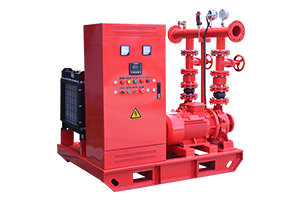What starts a fire pump?
Nov 04, 2024
Share:
A fire pump is started automatically or manually depending on the system's configuration:

1. Automatic Start
- Pressure Drop: Fire pumps are commonly triggered automatically when there's a significant drop in system pressure, indicating water flow due to a sprinkler head activation or other discharge points.
- Pressure Switch: A pressure switch senses the drop in pressure and sends a signal to the fire pump controller to start the pump.
- Jockey Pump Activation: A jockey pump (a smaller pump) is usually installed to maintain system pressure and prevent the main fire pump from frequently cycling on and off. If the jockey pump can't maintain the pressure (indicating actual water flow), the fire pump will automatically start.
2. Manual Start
- Fire Alarm Control Panel (FACP): A fire pump can also be manually activated from the fire alarm control panel if an operator needs to start it in response to an emergency.
- Local Manual Start: The fire pump controller typically has a manual start option to turn on the pump directly at the pump's location.
3. Electric vs. Diesel Pumps
- Electric Fire Pumps: Begin immediately upon receiving the start signal, as they are connected to an electrical source.
- Diesel Engine Fire Pumps: Use an automatic or manual start system similar to electric pumps but may require a few seconds to start up, as the engine needs to crank before reaching full speed.
Better Pump's systems are engineered to ensure reliable, quick startup in both automatic and manual modes, aligning with NFPA 20 requirements for emergency responsiveness.






